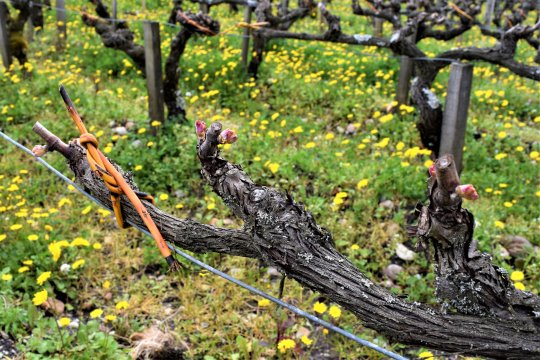Pruning allows a vine's length to be controlled over time, as well as its vigour and grape production. The grape variety and region will define how the vine is structured when pruned.
There are numerous examples, such as the Médocaine pruning method in the Médoc, simple Guyot in Burgundy, or Gobelet in the Rhône valley. Pruning gives the vine its shape, and if carried out successfully, it ensures the vine’s longevity and therefore the sustainability of production. The following year's work will depend largely on how this critical task is executed.



